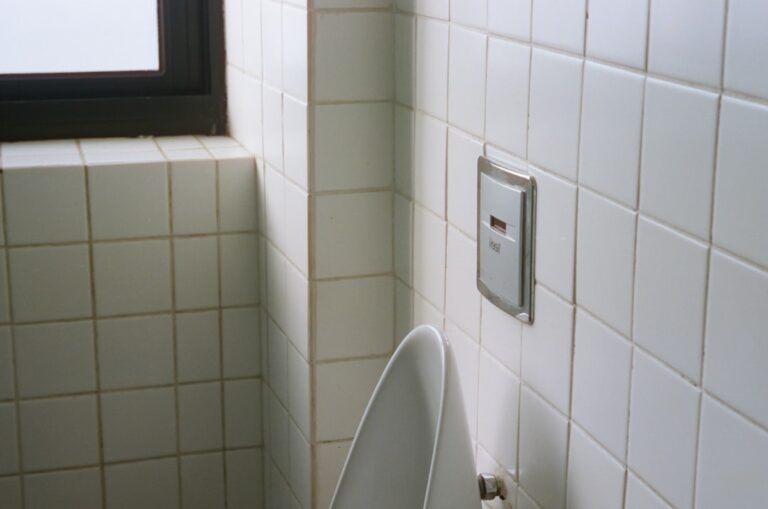Bathroom ventilation plays a crucial role in maintaining a healthy and comfortable living environment. Proper ventilation helps to regulate humidity levels, ensuring that excess moisture is expelled from the space. This is particularly important in bathrooms, where activities such as showering and bathing can lead to significant increases in humidity.
Without adequate ventilation, the air can become stale and damp, creating an unpleasant atmosphere that can affect the overall enjoyment of the space. Furthermore, effective ventilation contributes to the longevity of bathroom fixtures and finishes by preventing moisture-related damage. In addition to enhancing comfort, bathroom ventilation is essential for health reasons.
High humidity levels can foster the growth of mold and mildew, which can pose serious health risks, particularly for individuals with respiratory issues or allergies. By ensuring that the bathroom is properly ventilated, homeowners can significantly reduce the likelihood of mold growth and improve indoor air quality. This not only benefits the occupants’ health but also protects the integrity of the home itself, making bathroom ventilation a vital consideration for any homeowner.
Key Takeaways
- Proper bathroom ventilation is crucial for maintaining good indoor air quality and preventing moisture-related issues.
- Poor ventilation can lead to problems such as mold growth, peeling paint, and unpleasant odors in the bathroom.
- When choosing a ventilation system, consider factors such as the size of the bathroom, the level of humidity, and the noise level of the fan.
- Installing a bathroom exhaust fan is an effective way to improve ventilation and remove excess moisture from the air.
- Regular maintenance of ventilation systems, such as cleaning the fan and ducts, is essential for ensuring optimal performance and preventing issues like mold growth.
Common Problems Caused by Poor Ventilation
Poor ventilation in bathrooms can lead to a myriad of problems that extend beyond mere discomfort. One of the most significant issues is the development of mold and mildew, which thrive in damp environments. These fungi can quickly spread on walls, ceilings, and even within grout lines, leading to unsightly stains and potential health hazards.
Mold spores can become airborne, causing respiratory issues and allergic reactions in sensitive individuals. The presence of mold not only affects air quality but can also lead to costly repairs if left unchecked. Another common problem associated with inadequate ventilation is the accumulation of unpleasant odors.
Bathrooms are often confined spaces where moisture and waste can create a breeding ground for foul smells. Without proper airflow to dissipate these odors, they can linger and permeate other areas of the home. Additionally, high humidity levels can lead to peeling paint, warped wood, and rusted fixtures, all of which contribute to a decline in the bathroom’s aesthetic appeal and functionality.
Addressing these issues through effective ventilation is essential for maintaining both the health of the occupants and the condition of the home.
Choosing the Right Ventilation System for Your Bathroom
Selecting an appropriate ventilation system for a bathroom requires careful consideration of several factors. Homeowners must first assess the size of their bathroom, as this will influence the type and power of the ventilation system needed. A small bathroom may only require a basic exhaust fan, while larger spaces may benefit from more robust systems that can effectively manage higher humidity levels.
Additionally, it is important to consider the layout of the bathroom; for instance, if it has no windows or natural airflow, a more powerful fan may be necessary to ensure adequate ventilation. Another critical aspect to consider is the noise level of the ventilation system. Some exhaust fans operate quietly, while others can be quite loud and disruptive.
Homeowners should look for models that offer a balance between effective airflow and minimal noise, especially if the bathroom is frequently used during early morning or late-night hours. Energy efficiency is also an important consideration; selecting an Energy Star-rated fan can help reduce electricity costs while still providing effective ventilation. Ultimately, choosing the right system involves evaluating both functional needs and personal preferences to create a comfortable and healthy bathroom environment.
Installing a Bathroom Exhaust Fan
| Metrics | Data |
|---|---|
| Room Size | 100 square feet |
| Fan Size | 70 CFM (cubic feet per minute) |
| Noise Level | 50 decibels |
| Installation Time | 2-4 hours |
| Cost | 100-300 |
Installing a bathroom exhaust fan is a task that many homeowners can undertake themselves with some basic tools and knowledge. The first step in the installation process involves selecting an appropriate location for the fan, ideally near the shower or bathtub where moisture levels are highest. Once a suitable spot has been identified, it is essential to turn off power to the area to ensure safety during installation.
The next step involves cutting an opening in the ceiling or wall where the fan will be mounted, taking care to follow manufacturer guidelines for size and placement. After creating the opening, homeowners will need to connect ductwork that leads outside to expel moist air effectively. This may involve running ducting through attics or walls, which can be challenging depending on the home’s layout.
Once the ductwork is in place, the fan can be mounted securely, and electrical connections made according to local building codes. Finally, testing the fan to ensure it operates correctly is crucial before sealing up any openings or finishing touches. While professional installation is always an option, many find that with careful planning and execution, they can successfully install their own bathroom exhaust fan.
Tips for Proper Maintenance of Ventilation Systems
Maintaining a bathroom ventilation system is essential for ensuring its longevity and effectiveness. Regular cleaning is one of the most important maintenance tasks; dust and debris can accumulate on fan blades and grilles over time, reducing airflow efficiency. Homeowners should aim to clean their exhaust fans at least once every six months by removing any visible dust with a soft cloth or vacuum attachment.
Additionally, checking for any signs of wear or damage during cleaning can help identify potential issues before they become significant problems. Another key aspect of maintenance involves ensuring that ductwork remains clear and unobstructed. Over time, lint and other debris can build up within ducts, impeding airflow and reducing overall efficiency.
Homeowners should periodically inspect ductwork for blockages and consider hiring a professional service for thorough cleaning if necessary. Furthermore, it is advisable to check that any exterior vents are free from obstructions such as leaves or snow, as these can prevent moist air from escaping effectively. By following these maintenance tips, homeowners can ensure their ventilation systems continue to function optimally.
Additional Strategies for Improving Air Circulation in the Bathroom
In addition to installing an exhaust fan, there are several other strategies homeowners can employ to enhance air circulation in their bathrooms. One effective method is to keep doors open when possible to allow fresh air to flow into the space. This simple action can significantly improve airflow and help reduce humidity levels after showers or baths.
Additionally, using a ceiling fan or portable fan can help circulate air more effectively throughout the room. Another strategy involves incorporating plants known for their air-purifying qualities into bathroom decor. Certain plants, such as spider plants or peace lilies, can help absorb excess moisture while also improving indoor air quality by filtering out toxins.
Furthermore, ensuring that windows are opened whenever weather permits allows for natural ventilation that can help reduce humidity levels significantly. By combining these strategies with an effective exhaust system, homeowners can create a well-ventilated bathroom that promotes comfort and health.
Using Natural Ventilation Methods
Natural ventilation methods offer an eco-friendly alternative to mechanical systems for improving air quality in bathrooms. One of the simplest ways to achieve natural ventilation is by opening windows during and after bathing or showering. This allows fresh air to enter while simultaneously expelling humid air from the space.
Homeowners should consider installing operable windows that are easy to open and close for maximum convenience. In addition to windows, strategically placed vents or transoms can facilitate airflow between rooms without relying on mechanical systems. These openings allow air to move freely throughout the home while helping maintain comfortable temperatures in bathrooms.
Utilizing natural ventilation not only reduces energy consumption but also enhances indoor air quality by promoting fresh air circulation. By embracing these methods alongside traditional ventilation systems, homeowners can create a more sustainable living environment.
Addressing Humidity Issues in the Bathroom
Addressing humidity issues in bathrooms requires a multifaceted approach that combines effective ventilation with other strategies aimed at moisture control. One common solution is using dehumidifiers specifically designed for small spaces like bathrooms. These devices work by extracting excess moisture from the air, helping maintain optimal humidity levels even during peak usage times.
Another effective method involves using moisture-absorbing materials such as silica gel or activated charcoal in cabinets or storage areas within the bathroom. These materials help absorb excess moisture and prevent mold growth on towels or toiletries stored in humid environments. Additionally, homeowners should be mindful of their bathing habits; shorter showers with cooler water temperatures can significantly reduce steam production and subsequent humidity levels in bathrooms.
Choosing the Right Size and Power for Your Ventilation System
Selecting the right size and power for a bathroom ventilation system is critical for ensuring optimal performance. The general rule of thumb is that a fan should be able to exchange all of the air in a bathroom at least eight times per hour; this means calculating the room’s volume (length x width x height) and selecting a fan with an appropriate cubic feet per minute (CFM) rating based on this measurement. For example, a small bathroom measuring 5 feet by 8 feet with an 8-foot ceiling has a volume of 320 cubic feet; thus, a fan rated at approximately 40 CFM would suffice for adequate ventilation.
However, larger bathrooms may require fans with higher CFM ratings to effectively manage humidity levels during peak usage times. Homeowners should also consider factors such as ceiling height and whether multiple fixtures are present when determining fan size; consulting with professionals or referring to manufacturer guidelines can provide valuable insights into making informed decisions.
Understanding the Role of Ventilation in Preventing Mold and Mildew
Ventilation plays an integral role in preventing mold and mildew growth within bathrooms by controlling humidity levels effectively. Mold thrives in damp environments where moisture accumulates; therefore, maintaining proper airflow helps reduce excess moisture that could otherwise lead to fungal growth. By utilizing exhaust fans during bathing activities and ensuring adequate airflow throughout the space, homeowners can significantly decrease humidity levels that promote mold proliferation.
In addition to mechanical ventilation systems like exhaust fans, natural ventilation methods such as opening windows also contribute significantly to mold prevention efforts. Allowing fresh air into bathrooms helps dilute humid air while promoting evaporation from surfaces like tiles or countertops where moisture may linger after use. By understanding how ventilation impacts mold growth dynamics within bathrooms, homeowners can take proactive measures toward creating healthier living spaces free from harmful fungi.
Benefits of Effective Bathroom Ventilation for Your Health and Home
The benefits of effective bathroom ventilation extend far beyond mere comfort; they encompass significant health advantages as well as protection for one’s home investment. Properly ventilated bathrooms contribute positively to indoor air quality by reducing humidity levels that foster mold growth—thereby minimizing respiratory issues associated with mold exposure among occupants. Moreover, effective ventilation helps preserve bathroom fixtures by preventing moisture-related damage such as peeling paint or warped wood surfaces—ultimately prolonging their lifespan while maintaining aesthetic appeal over time.
Homeowners who prioritize proper ventilation not only enhance their living environment but also safeguard their property value through proactive maintenance practices aimed at preventing costly repairs down the line. In conclusion, understanding the importance of bathroom ventilation cannot be overstated; it serves as a cornerstone for creating healthy living spaces while protecting one’s home investment from potential damage caused by excess moisture accumulation over time.
FAQs
What are the benefits of having proper bathroom ventilation?
Proper bathroom ventilation helps to remove excess moisture, odors, and airborne pollutants from the bathroom, which can prevent mold and mildew growth, improve indoor air quality, and reduce the risk of damage to the bathroom fixtures and surfaces.
What are some common bathroom ventilation solutions?
Common bathroom ventilation solutions include exhaust fans, windows, and passive ventilation systems such as vents and ducts. Some modern solutions also include smart ventilation systems that can automatically adjust the ventilation based on humidity levels.
How do exhaust fans work for bathroom ventilation?
Exhaust fans work by drawing moisture, odors, and pollutants out of the bathroom and expelling them outside. They are typically installed in the ceiling or wall and are connected to ductwork that leads to the exterior of the building.
What are some considerations when choosing a bathroom ventilation solution?
When choosing a bathroom ventilation solution, it’s important to consider the size of the bathroom, the level of moisture and odor produced, the location of the bathroom within the building, and any local building codes or regulations regarding ventilation.
How can I improve the effectiveness of bathroom ventilation?
To improve the effectiveness of bathroom ventilation, you can ensure that the ventilation system is properly sized for the bathroom, regularly clean and maintain the exhaust fan or other ventilation equipment, and consider using additional ventilation solutions such as windows or passive vents.






